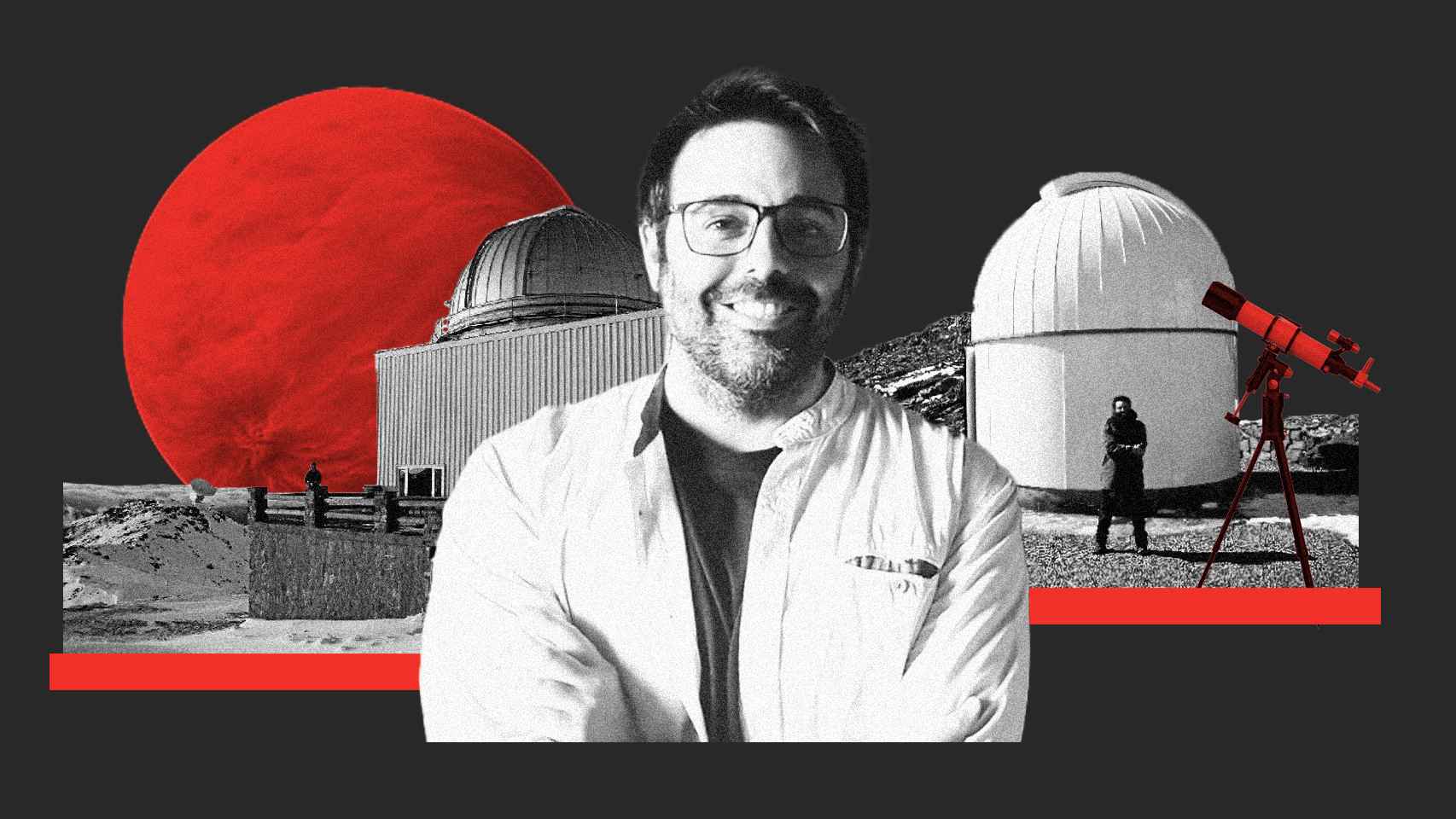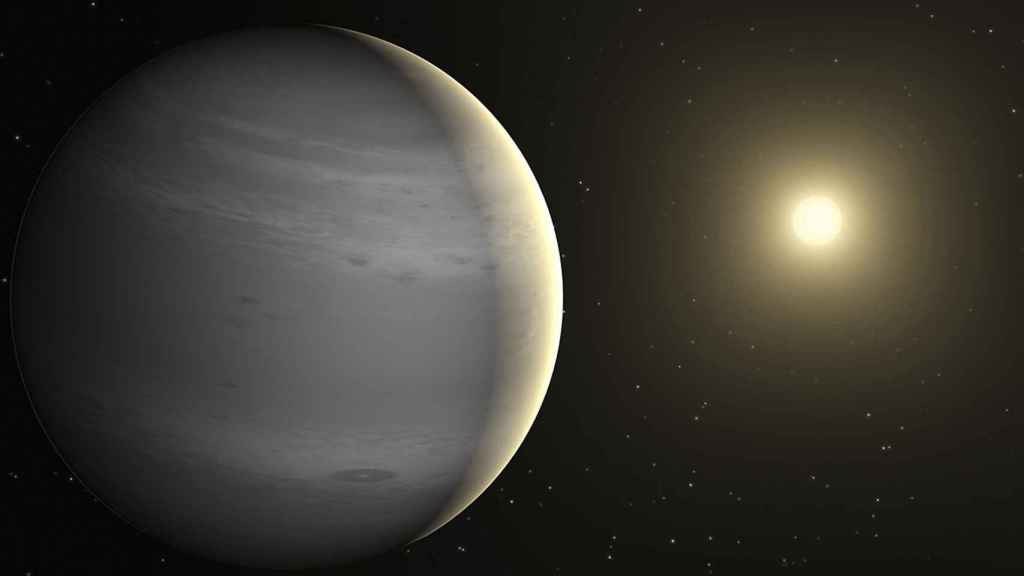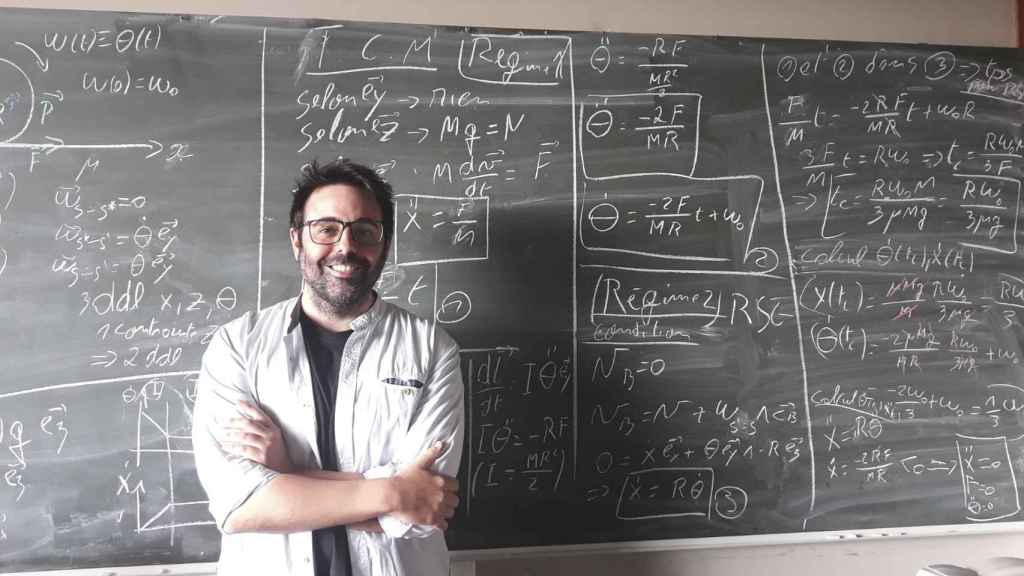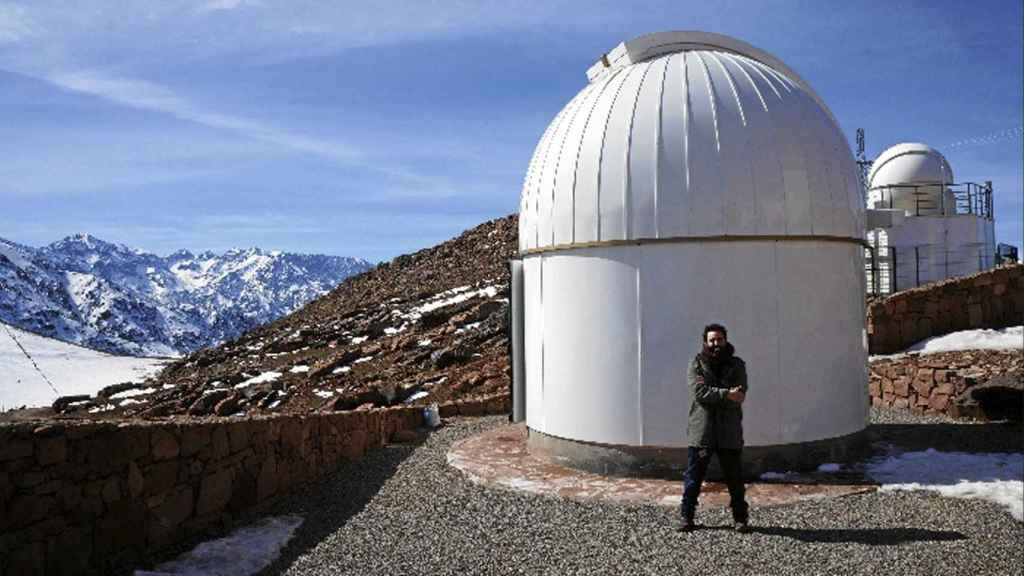The Andalusian who looked at the stars through his grandfather’s telescope and just discovered an exoplanet

Francisco J. Pozuelos Romero has trouble picking up the phone the first time. The building he works in does not have good coverage. Once the signal is given, a researcher from the Institute of Astrophysics of Andalusia (IAA-CSIC) admits that he was “very happy” after discovering a planet that is “light as cotton candy.”
Yes, you read that right, cotton candy. The comparison is not made to make the discovery more appealing to the general public, it certainly is. Density OSA-193b – as the new planet is known – is 0.059 grams per cubic centimeter; that is, much lower than that of Jupiter (1.33 g/cm³) or Earth (5.51 g/cm³), but very similar to that of cotton candy (0.05 g/cm³). It is the second lightest planet discovered to date, second only to Kepler 51d.
At this density, there will be those who believe that we are observing a tiny planet. Well, you’re wrong: it’s twice the size of Jupiter. “This is a huge planet. It shouldn’t exist at the size it has.“Pozuelos, who along with Khalid Barkaoui, a researcher at the University of Liège, is the main author of the study published Tuesday in the journal Nature Astronomy.
(A Murcian who at NASA is researching how to find water on Mars: Hermann’s Paradox)
When such a strange discovery is made, there is a risk of raising suspicions about its veracity. This is exactly what happened to this group of researchers. They submitted their results to a scientific journal for the first time and the reviewers did not approve of them because they didn’t believe them: “We were asked to recharacterize the star.”
They, too, “were very shocked by the first results.” But they were convinced that they were right. So they redid the entire analysis process and got the same data. “There was no error in the methodology, just the planet has these characteristics“.
A real mystery
When the planet’s density is below the barrier of 0.1 g/cm³, they are called ultra-light. Although they have known each other for 15 years, they remain “a real mystery.” Of the ten we know, WASP-193b seems the most interesting: “It will allow us to uncover the unknowns that exist around it; especially about its formation.”
The “folder” WASP-193b is not yet closed. Now they will begin to study its atmosphere in detail thanks to space telescope James Webb. Studying these exoplanets will not only lead to a better understanding of how planetary systems form, but, as Pozuelos points out, “us helps us understand our own personality“.

Conceptual illustration of WASP-193b.
Yes, he expresses his doubts about whether we can find life beyond the earth: “We still have about 20 years left.” He believes one decade is too early. In fact, major projects aimed at searching for life are planned to begin in 2030-2040. “The day we discover life will solve one of the greatest questions facing us as a species.”
Since it is unknown when “that day” will come, we know for sure that no one will be able to know in what context it will be. Because, as this researcher says, the best discoveries don’t understand graphs and they always happen after business hours.
This didn’t happen to him with WASP-193b, but it did with another recent discovery when I was on vacation. “Suddenly you start getting emails and messages saying something very important has been discovered and you need to fire up all the telescopes to point at it.”
The first souvenir telescope
The researcher does not specify whether he vacationed in his native Huelva. There, among the beaches, his interest in astronomy began. It was 1997 when the sky turned white and blue. Comet Hale-Bopp. It is considered one of the astronomical events of the 20th century because it could be seen by millions of people for months.

Pozuelos led an international team that discovered a new planet called WASP-193b.
One of them was young Pozuelos, who was spending the night with his friends on the beach watching the comet. “It was fantastic and I became very curious“, he recalls. Due to the lack of Internet, the only way to find out the latest news was to go to the newsstand every morning.
Pozuelos has physical memories of that time. It was made by his mother, who drew him a picture of Comet Hale-Bopp. This illustration became the cover of his doctoral dissertation, as it was dedicated to the small bodies of the Solar System. His father also bought him a poster of a comet seen from the Arizona desert. Despite this, his family never had a tradition of astronomy.
Proof of this was his grandfather’s telescope, which was “staggering” around his house. This was the first telescope he approached. With him, as a teenager, he secretly traveled to beach on a full moon night: “It’s true that he was very small. But enough so that you can see the lunar craters.”
Hobby turned into work
I studied physics at the University of Seville and completed my PhD at the IAA. However, the postdoctoral period was spent abroad. It was “many years.” But they helped him move from comets and asteroids to exoplanets. “It was really something I wanted to dedicate myself to because I really enjoyed it.” Pozuelos admits with the enthusiasm typical of a man who devotes himself to something he is passionate about.

Wells at the Oukaimeden Observatory in Morocco.
He was lucky enough to return to Spain after almost seven years of international travel, during which he worked for the German Aerospace Agency and the University of Liège (Belgium), whose team discovered a new solar system with seven Earth-sized planets. —although by that time Pozuelos had not yet collaborated with them—.
He admits that he accepted the IAA’s offer because it was an “ideal place”: located in the region where he was born and “with a huge scientific level.” In addition to the center located in Granada, Pozuelos believes that “our country has astrophysicists of the highest level.” He extends this assessment to other areas of research: “It is true that we are not investing as much as we would like. But Spain has a very high scientific level.“.
What would I take into space?
The names of exoplanets are almost unpronounceable. The way he sings Bogota is burning, it could just as easily be called “571-/9A”. Pozuelos, who admits to being a follower of the group and having heard the song of the same name, suggests scientific explanation. “The first part of the nomenclature indicates the telescope used. The following numbers refer to the number of the discovered planet. And the letter appears only if it is a planet.”
The group dreams of establishing Cartagena “on some exoplanet” that they plan to colonize. Pozuelos, for his part, has not even thought about what he will do if this happens, because he knows full well that it will be impossible. visit these planets “even in the next 200 years.” Although he plays with his imagination, if he had the opportunity to eat home-cooked food, his mother’s chocolate meatballs would undoubtedly be on the menu.
Along with mackerel noodles, this was what he missed most gastronomically when he was a few miles from Punta Umbria. He grew up in the municipality of Huelva, where he is known as Curro. At work they call him Fran. But no one had the audacity to call him “Curro Romero exoplanets‘. “The truth is they never told me that,” he concludes with a laugh.